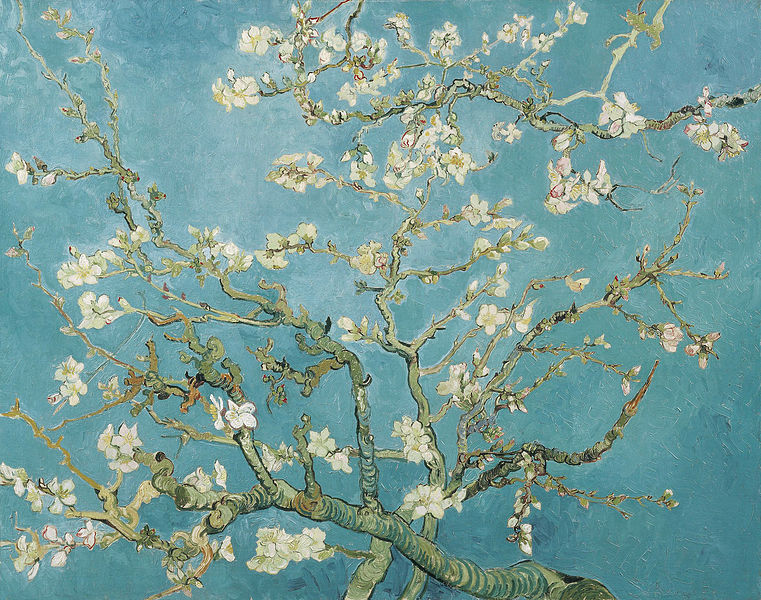On January 31, 1890 Vincent Van Gogh received word that his brother Theo’s wife Jo had given birth to a son, Vincent Willem Van Gogh. As a means of celebration, Van Gogh began work on a painting for Theo and his wife. He was very close to his brother and he sought to symbolize new life in the flowers of the almond tree for the birth of baby Vincent.
Van Gogh wrote to his mother of the birth of Theo and Jo’s baby,
“How glad I was when the news came… I should have greatly preferred him to call the boy after Father, of whom I have been thinking so much these days, instead of after me; but seeing it has now been done, I started right away to make a picture for him, to hang in their bedroom, big branches of white almond blossom against a blue sky.”
The composition is unlike any other of Van Gogh’s paintings. The branches of the almond tree seem to float against the blue sky and fill the picture plane. Dark lines outline the branches. This is a feature that Van Gogh had admired in Japanese floral studies that, for example, may depict a portion of a stalk of bamboo in an empty space.The bright color is reflective of the paintings made in Arles and the transformational work Van Gogh had on the still life genre.
Almond Blossom, 1890
Vincent van Gogh (1853-1890) Oil on Canvas, 73.5 x 92 cm Van Gogh Museum, AmsterdamComposition
Already in Arles, Van Gogh had been fascinated by the orchards, filled with apricot, peach and plum trees and in full bloom at the time of his arrival in March 1888.
The composition of Almond Blossom is, however, both unusual and unique in Vincent’s oeuvre. The branches seem to float against the blue sky, and it is unclear if they are still part of the tree or set in a vase, as in one of his earlier works.
With an unusual regularity, the entire pictorial surface has been filled with branches, which are further accented by the use of dark contours. Both this sharp outlining and the placement of the tree were certainly inspired by Japanese prints, which Van Gogh had seen for the first time in Paris. This influence can also be seen in a number of other paintings.
Link to Almond Blossom page at the Van Gogh Museum web site, click here
Link to Wikipedia article on Van Gogh’s Almond Blossoms paintings, click here.

